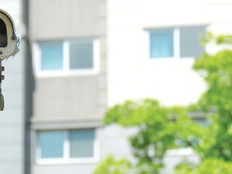8 Key Components to Bringing a Connected Campus to Life
As the uses of technology expand for both social and academic purposes, campus Wi-Fi strength and reliability has become a much more important factor for students when deciding where they would like to go for school.
Students today don’t just live online; they also learn online. Many universities are investing more heavily into their networks. Administrators and IT leaders are on working doggedly to improve their infrastructure as students continue to add strain with an increasing number of devices per person.
But on many campuses, work remains to be done. For higher education institutions striving to be a connected campus, administrators should focus on being able to provide students these offerings:
SIGN UP: Get more news from the EdTech newsletter in your inbox every two weeks!
1. Build a Robust Wi-Fi to Handle Any Student Demand
At many universities, IT networks have sprawled over time, often without a cohesive strategy to guide investments. As a result, disparate legacy hardware can limit the performance of the wireless network and make it difficult to perform upgrades without massive rip-and-replace efforts.
By centralizing networking strategies and investing in state-of-the-art solutions, colleges can give students and faculty the robust, reliable connectivity they need.
2. Adopt Network Optimization Tools to Keep Networks Humming
As networking investments grow, so do monitoring and troubleshooting tasks. Network optimization tools can aggregate data from across the network to alert IT professionals when problems arise.
Often, such tools help IT staff diagnose and correct potential problems before students and faculty even notice them, thereby increasing user satisfaction and reducing the maintenance backlog.
3. Integrate Digital Signage for Engaging Communication
Increasingly, higher education institutions are adopting digital signage solutions to share information across campus, enhance classroom experiences, provide wayfinding services and facilitate emergency announcements.
According to Digital Signage Today, up to seven out of 10 colleges have already implemented digital signage, for reasons ranging from saving money on printing to needing a convenient way to encourage students to fill out course evaluations.
4. Improve Academic Opportunities with Digital Collaboration Tools
Through video, voice, instant messaging and file-sharing tools, colleges can empower students to seamlessly collaborate inside and outside the classroom. Such tools also let faculty and students facilitate virtual visits from experts in the field and access files from any machine on campus.
Significantly, collaboration tools make it possible to deliver the distance-learning programs that have become such an important component of many students’ education.
5. Offer a Modern Experience with Learning Management Systems
These systems have been a staple of the IT environment at most colleges for a decade or more. However, as the capabilities of consumer technology have expanded, some LMS tools have stagnated by comparison.
In the higher education edition of its 2017 “Horizon Report,” the New Media Consortium suggests that next-generation LMS solutions, designed to support more flexible online learning spaces, may be coming to the higher education market.
6. Help Professors Immerse Students with Audiovisual Tools
Audiovisual solutions help professors share information in a visual format, incorporate video and music into lectures, and display student work. Wireless AV tools that seamlessly pair with mobile devices can encourage adoption and reduce wasted instructional time.
7. Streamline Troubleshooting with a Back-End Support System
Connected campus solutions require data center support, including appropriate networking, processing and storage. For some colleges, the public cloud will be a good fit for some of these infrastructure needs. Others are incorporating hyperconverged infrastructure — which combines compute, storage and networking into a single, on-premises solution — to power hybrid cloud models.
8. Protect Student Data with Robust Security Solutions
The more connected that campuses become, the more they must be mindful of security — for example, ensuring that Internet of Things devices don’t compromise the network. In a 2017 survey from the Center for Digital Education, 36 percent of colleges say they will need to beef up cybersecurity to facilitate their connected campus plans.
To learn more about the steps to transitioning to a connected campus, read the CDW white paper "Building Blocks for the Connected Campus."







